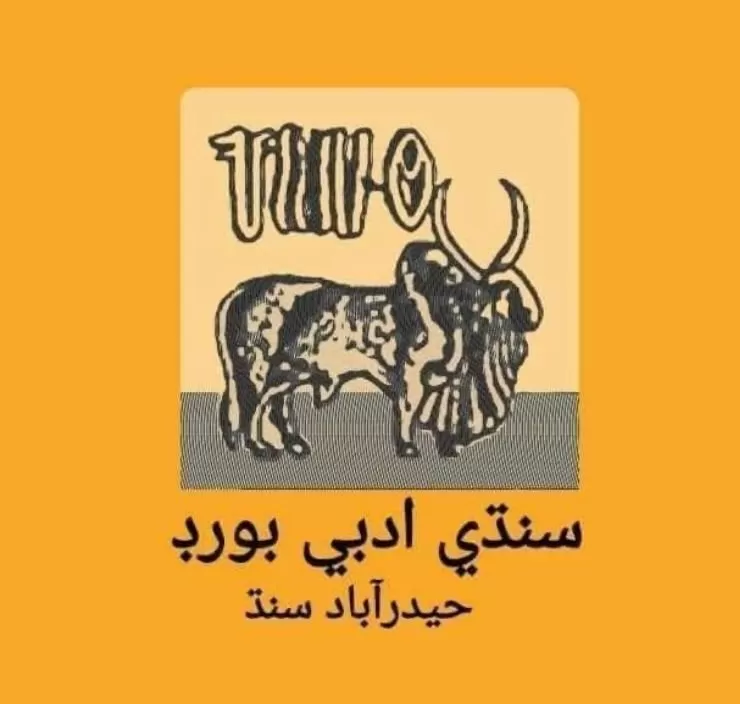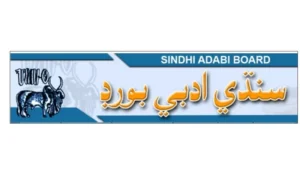Sindhi Adabi Board’s bull logo reflects culture or religion?

Sindhi Adabi Board's bull logo reflects culture or religion?
Riaz Sohail
Does the monogram of the government-run Sindhi Adabi Board in Pakistan’s Sindh province reflect a culture or a religion?
The Sindhi Adabi Board (literary board) has recently removed the bull from its monogram and replaced it with a map of Sindh. Writers, poets and political workers are protesting against this decision and it is being termed as a reactionary decision.
The Literary Board existed even before the creation of Pakistan
The Sindhi Literary Board is one of the few literary academic institutions that existed even before the creation of Pakistan. The founder of which was the nationalist leader GM Syed. In 1940, when GM Syed was the provincial education minister, he formed the Central Support Board for the Promotion of Sindhi Literature, which included scholars and writers of the time who belonged to both the Hindu and Muslim communities. The office of this institution was established in the present NGV High School.

After the creation of Pakistan, this institution continued to research and compile Sindhi literature and history. In 1951, it was named as Sindh Adabi Board, registered in Khairpur State, and in the next few years it became a fully autonomous institution.
The office of the Sindh Adabi Board was moved from Karachi to Hyderabad and it was established in the residence of Makhdoom Muhammad Zaman Talib-ul-Moli, the spiritual leader of the Sarwari Jamaat, poet and senior politician.
Culture Minister lodges FIR for humiliating King Priest statue
UN Secretary General visits world heritage site Moen jo Daro
The Sindhi Adabi Board was shifted from Hyderabad to a new building on the Super Highway where it occupies a large area, headed mostly by writers from the progressive class. The responsibility of the board includes the preparation of Sindhi dictionary, folk literature, ancient literature, promoting the history of Sindh. So far this institution has published about 6500 books and on behalf of the institution three literary works including women and children magazines are published. The books are also available on its website.
Board’s flag made new logo
The present chairman of the Sindh Adabi Board is Makhdoom Saeed-ul-Zaman, who is the son of Makhdoo Talib-ul-Moli.
Several attempts were made to contact Makhdoom Saeed-ul-Zaman, but he did not responded. However, Secretary of the Board Sikandar Shah told the BBC that the decision to change the logo rests with the Board of Governors, which is an authorized body. Even before this, the logo of the board kept changing, in which Masoom Shah’s tower was written as ‘SAB’.

“Sindh map reflects Sindh which is prevalent and popular as it is an institution of Sindh that is why the map has been made a logo,” he said.
Has the decision been made on religious grounds?
The Chairman of the Sindhi Adabi Board, Makhdoom Saeed-ul-Zaman belongs to the Sarwari lineage, which was founded by Makhdoom Noah Sarwar and his is located in Hala. Social media is alleging that there is a religious basis behind the removal of the bull logo.
Sikander Shah, secretary of the Sindhi Adabi Board, says that there is no religious thought behind the removal of Mohan Jo Daro’s seal logo. “However, this logo is not placed on the religious books that are published.”
When he was asked since when this has been done, he said that this process has been going on for many years. On the other hand, some religious books published in the past have this bull monogram.
The writer and intellectual of Sindh, Taj Joyo wrote a letter to Makhdoom Saeed-ul-Zaman, protesting against this decision and questioned whether the conservative members of the literary board had a hand in this decision.
Taj Joyo wrote that ‘the bull logo monogram has been in use since 1958, which was created by the famous artist of Sindh, A.Q Shaikh.
The magazines that were published in the early months of 2022 included this monogram. Later in April this has been removed and given the map of Sindh, they consider it a lollipop so that there is no opposition to removing the bull logo.’
What is the relationship between the bull and the Indus civilization?
The seals found in the ruins of Moen jo Daro, 4500 year old civilization of Indus valley. There is also a bull seal. Chairman Sindhi Language Authority Dr. Ishaq Samejo says that the symbol of the bull has a historical and conscious background. It was made because they had the bull not only as an animal, but it was the most supportive and helpful and a friend in their social and economic life.
“The bull lives as a domestic companion in the wild, agrarian society and today’s industrial age with humans as members of the household. The people who added Moen Jo Daro’s bull to the logo of the Sindhi Adabi Board had an idea, in this logo. The deletion of the bull is a deviation from the ancient civilizational journey of Sindh, love for nature and development.
Writer and intellectual Taj Joyo says that Moen Jo Daro and the Sindhi bull found in it and the seal logo of the ancient Sindhi script are the symbols of Sindh civilization, what are the motivations behind it to change? This decision was not taken for anyone’s pleasure and satisfaction. Moen Jo Daro is the city of the Hindus and the bull is their symbol.
Protests and campaigns on social media
The activists of Awami Tehreek went on a hunger strike in Hyderabad against the decision of the chairman of the Sindhi Adabi Board, while a campaign was launched on social networking website Twitter with the hashtag of the Sindhi Adabi Board, while discussion on other apps including Facebook.
Raja Sand said on Twitter that “There is a particular mentality behind changing the logo of the Sindhi Literary Board. Let us all save the identity of Sindh (Moen Jo Daro) and raise our voice for the restoration of the original logo.”
Mukesh Raja writes: ‘the world wants to read /decipher the Moen jo Daro script but the biased chairman of the Sindhi Adabi Board has removed the seal logo of the script because it has a bull and they cannot print religious books with this bull logo.’
Asadullah Durrani wrote that the logo of the bull is our cultural symbol which has nothing to do with religion, even religious parties did not object to it. All the artefacts of Moen Jo Daro are world heritage which belong exclusively to Sindh and we are proud of them.
Journalist and columnist Dodo Chandio writes that ‘There is an objection to changing the logo of the bull because the justification given for its change is absurd. It is a sign, so how can religious books be published with this logo. If this matter is digested by them, they will distort 14 hundred years of ancient history by tagging it as Hindu history.
Elahi Bakhsh Samo wrote that ‘Sindh government should include progressive and secular people instead of conservative people in the Sindhi Adabi Board.’
Translation by Shahnilla Fayaz
Courtesy BBC




